
“So I dressed with remaining ceramics, furniture and objects;
so I placed a message in each, a small story, at times ironic and obviously wordless,
but audible to those who believe in poetry.”
Piero Fornasetti
Time ago, while I was watching the italian tv programme “Passpartout” I discovered the artist Piero Fornasetti. What caught my attention, as I am a lover of house-museums, was his strange and surreal house, full of fantastic stuff and unusual decoration, looking like a mix between a childish wunderkammer and a surreal labirinth. Later I found out that Piero Fornasetti has been a talented and eclectic illustrator and interior decorator, apart from being painter, sculptor, printer and creator of more than 11,000 items.
Born in Milan in 1913, Piero Fornasetti was basically a draughtsman, a fanciful and eclectic artificer of worlds made of paper. His art was mainly focused on the house, as a micro-universe and mirror of our inner world. He started as printer: he liked to print his drawings on cloths for foulards, ties and small pieces and decorative bronze and ceramic frieze objects. His personal and unique way of decoration is lead by an unrestrained immagination ranging from his classical roots and inspirations like Piero della Francesca, Giotto, pompeian and renassaince frescoes to metaphisycal and surrealist art, up to an all italian interpretation of pop art (like using the same woman’s face for his porcelain plates with hundreds of unique variations).
Fornasetti’s style was very far from the current 60’s-70’s taste, mainly rationalist and functional, and found a friend in Gio Ponti, who had similar tastes. He met the architect and industrial designer in the early ’40 and they started a friendship and several collaborations, like ‘The Lunar’ illustrated Calendar. He also started a series of decorative frescoes like the Palazzo Bo in Padova, the interior of the San Remo Casino, interiors for the Casa Lucano and took part, with his friend, in the interior decoration of the Andrea Doria ocean liner, designing the first class areas.
In 1979 Gio Ponti died and, the following year, Piero opened the shop “Themes and Variations” in London and started the first book project where he collected all his illustration and kept on his work until his death, happened in 1988. Today is Piero’s son, Barnaba, to perpetuate his father tradition by continuing to produce Fornasetti designs and reviving the most popular pieces, creating new ones, renewing hand crafted production in collaboration with industries which manufacture under license.
***
Scoprii Piero Fornasetti tempo fa, mentre guardavo Passepartout. La sua casa mi apparve come una wunderkammer infantile e un labirinto surreale, pieno di oggetti unici e strani. Fu così che conobbi l’arte di Piero Fornasetti, illustratore e decoratore d’interni oltre che pittore, scultore, stampatore di libri d’arte e creatore di oltre undicimila oggetti.
Nato a Milano nel 1913, Fornasetti è stato principalmente un disegnatore, eclettico e fantasioso inventore di mondi di carta. La sua arte è focalizzata sulla casa, vista come micro-universo e specchio dell’immaginazione più pura e segreta. Iniziò come stampatore, trasferendo su stoffe e sete i suoi motivi e anche su qualche oggetto d’arredamento in ceramica. La ricerca di Fornasetti si lascia guidare da un’immaginazione senza limiti e che spazia dalle basi fortemente classiche come Piero della Francesca, Giotto, le pitture pompeiane e gli affreschi rinascimentali fino alla pittura metafisica, al surrealismo e ad una interpretazione pop tutta italiana e ben più raffinata di quella statunitense come le variazioni dello stesso volto di donna (una cantante italiana degli inizi del ‘900) tradotta in centinaia di modi diversi, utilizzando non già il colore, ma le forme.
L’interesse verso la creazione di oggetti ad esemplare unico e quindi la preferenza per l’artigianato, lo porta ad essere poco affine al gusto a lui contemporaneo ovvero quello razionalista e funzionale degli anni ’60-70′. Trova quindi in Gio Ponti una grande affinità artistica. Incontrato nei primi anni ’40, Gio Ponti sembra condividere con lui molte scelte estetiche. Negli stessi anni si dedica alla decorazione di alcuni ambienti come Palazzo Bo a Padova, gli interni del casinò di San Remo, la casa Lucano e, in collaborazione con l’amico, anche alcune cabine del transatlantico “Andrea Doria”.
La creatività prolifica e poliedrica che investe migliaia di oggetti e mobili, senza paragoni per fantasia e varietà, è attraversata da un linguaggio coerente e riconoscibile. La citazione e la parodia sono parte fondamentale della sua opera, che gioca con l’inverosimile senza tralasciare una velata ed elegante ironia. Le immagini di città impossibili con palazzi infiniti ricoprono paraventi e mobili, in modo da aumentarne la spazialità e confondere i confini dello spazio. Il mobile così non è più oggetto in una stanza, e come tale limite tangibile della realtà, ma continuo dell’immaginazione fantastica, illusioni labirintiche oltre le quali le pareti della stanza si annullano. Il trompe l‘œil è la tecnica principalmente usata per creare l’illusione della profondità e dello spazio infinito, uno spazio che ricorda Escher per il paradosso e Magritte per il nonsense.
Nel ’79 Gio Ponti muore e l’anno dopo Fornasetti apre un negozio a Londra chiamato “Temi e Variazioni”, si dedica all’edizione di un suo catalogo e continua il suo lavoro fino alla morte, avvenuta nel 1988. Oggi è il figlio Barnaba a portare avanti la tradizione del padre, continuando a produrre e a ravvivare i motivi Fornasetti.
source: fornasetti.com; mrpeacockstyle.blogspot.it; mixdesign.it
Art critic, Philippe Daverio, tours Piero Fornasetti’s Milan studio/apartment (originally designed in 1930) and chats with his son, Barnaba Fornasetti. The video is in Italian, but even if you don’t understand, this video offers a rare visual glimpse into the world of Fornasetti. You can see the chandelier made of shells and the red room, a room that contains only red book and book with the word “red” in their title.
Home:











Lina Cavalieri:
He is best known for his porcelain plates with unique variations of the same woman’s face. It’s funny and weird the obsession that Fornasetti had with this italian belle epoque singer and diva called Lina Cavalieri. I didn’t find anything about the reason why he chose her, probably there is no reason. Maybe he believed that she had the perfect face and so he thought to give to all his objects her face, the face he wanted objects to have if they were alive. His friend and partner Gio Ponti said about Piero: “He makes objects speak” and that’s probably what he was trying to do. It was a way to give beauty, to make them speak, to humanize them.









Fornitures:
The Fornasetti aesthetic research doesn’t conceive volumes. He is all focused in giving things a new face, literally or not. Using trompe l‘œil or just drawing deceitful cities on fornitures, it’s a way to give endless deepness to something flat and two-dimensional. Its aim is all about confusing fantasy and reality, mixing dimensions and that’s way Fornasetti’s home looks like a dreaming land. Fornitures are not considered as objects in a room, touchable limits of our reality, but as a passage through which fantasy can flow, just going through them.
















Magazine cover illustration, sun chair in white, sun fabric, sun cube and a sun chair in gold.


Roman Foot umbrella stand,wallpaper, umbrella stands, lacquer trays, Adam (of Adam & Eve) plates—6 shown from a set of 12.

cd holder, butterfly lamp and lamp holder
Drawings and paintings:
Fornasetti was an eccentric illustrator. He took the lesson of the absurd from surrealism and melted it with the nonsense and irony.










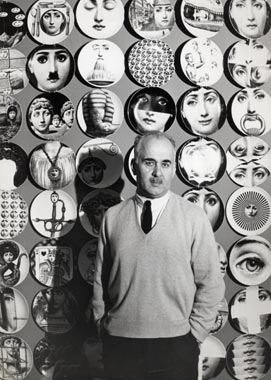
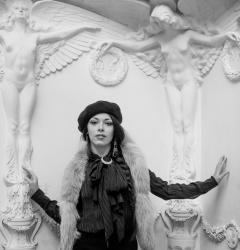


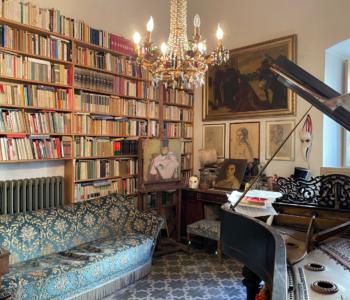
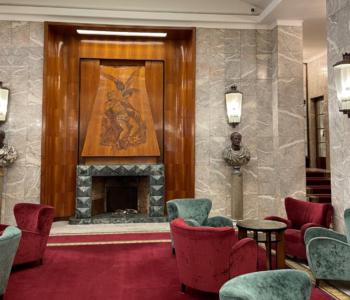
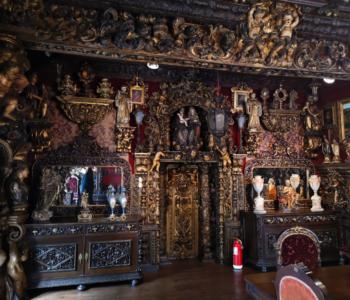
1 Commento a “Piero Fornasetti”
what a great article, well done! love the house photos, keep it up…